Creating a community tank for betta fish is a challenge.
Bettas show aggressive behavior toward their own kind as well as other fish species.
Ideal betta tank mates must also share the same tropical tank requirements as bettas.
So, can neon tetras live with betta fish in the same tank?
Betta fish have a bad reputation for their aggressive temperament. But they can live with neon tetras in the right aquarium setup. Betta fish and neon tetras prefer similar water conditions and get along well if provided with enough swimming space.
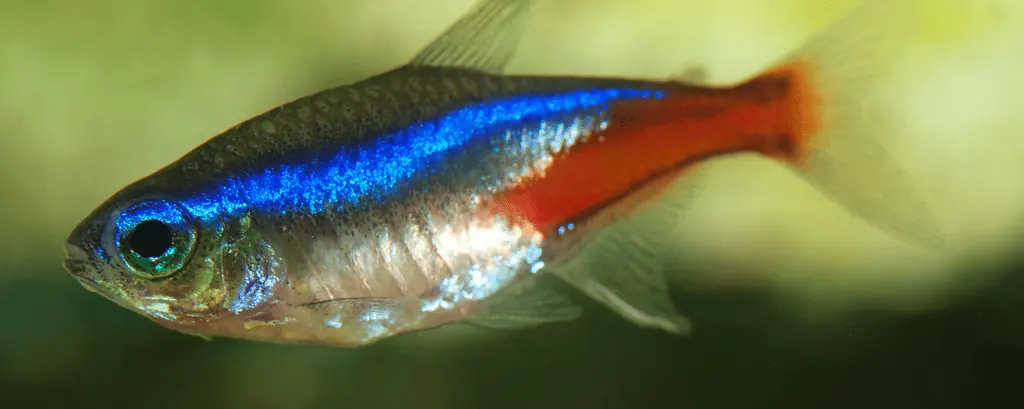
Table of Contents
Can Neon Tetras and Betta Fish Coexist Peacefully?

Many fish keepers have long-term success keeping neon tetras and betta fish together.
Several factors affect how well these two fish species get along.
Individual Fish Personalities
Male and female betta personalities range from timid to super aggressive.
Pay attention to your betta’s behavior. Common signs of aggression in bettas include gill flaring and fin spreading.
Test your betta’s aggressive behavior by placing a mirror on the side of the tank. If your betta always flares and attacks the mirror, the fish likely has an aggressive personality.
A less aggressive betta still flares at the mirror but usually does not attack it. Very timid bettas may swim away or hide from the mirror.
Neon tetras have a calm temperament but may nip at a male betta’s flowing fins.
Increase your chance of success for peaceful cohabitation by placing the neon tetras with a less showy female betta.
The Health of the Fish
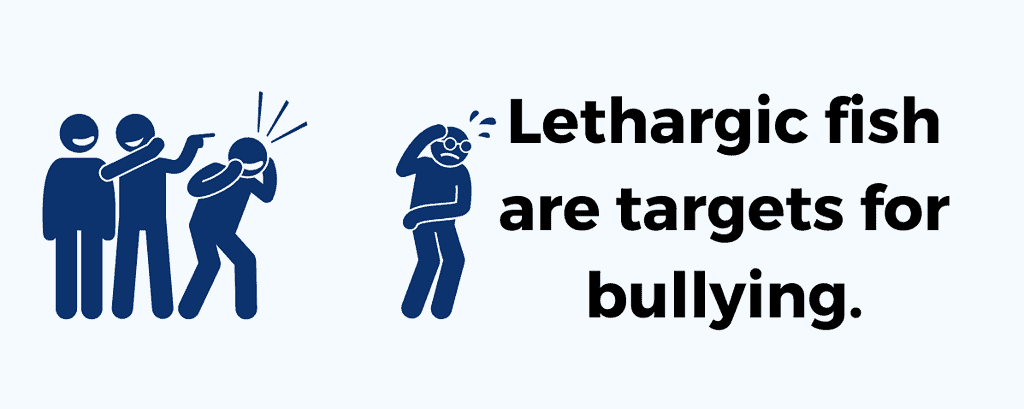
The health of your fish is also a factor in their behavior.
A sick or injured fish is usually more stressed, leading to aggressive behavior.
If the fish is lethargic or unable to swim away from danger, it is also a target for bullying.
Ensure your fish are healthy before placing them in your aquarium.
We recommend a separate quarantine tank for new fish. Keep the new fish in the quarantine tank for 2-4 weeks and check for signs of health issues.
If the fish does not show signs of illness during this time, you may add it to your main aquarium.
Environment

Poor water quality or a lack of hiding spots also causes stress and aggressive behavior among neon tetras and bettas.
A small tank also increases the risk of territorial aggression in both fish species.
Choose a larger tank and perform regular maintenance. This decreases aggressive behavior in your fish.
Providing access to hiding places makes your fish feel secure and reduces stress.
Proper Introduction
A proper introduction is a major factor in how well your betta and neon tetras get along.
When a betta feels a threat to its territory, it reacts with aggression.
Placing a school of neon tetras into a betta tank is a recipe for disaster.
Reduce territorial behavior by establishing a neon tetra tank before adding your betta fish.
Minimum Tank Size Required for Neon Tetras and Betta Fish
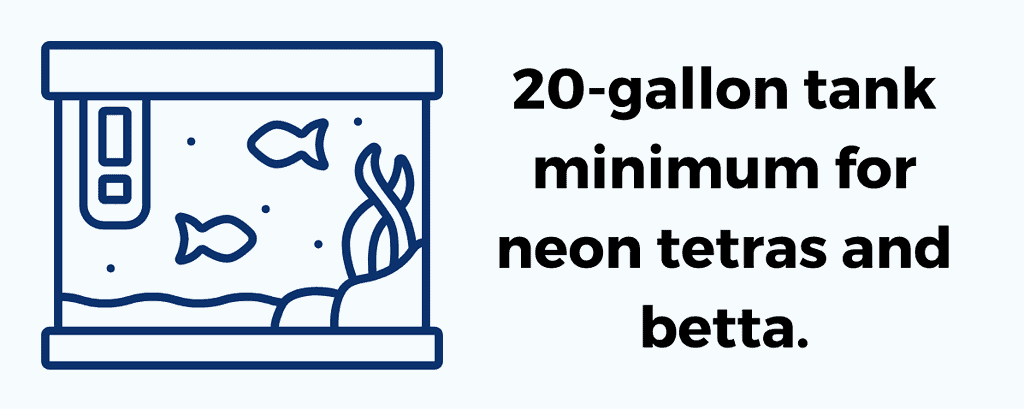
A 10-gallon tank works well for a single betta fish but is not large enough for a community tank setup.
The smallest tank size we recommend for keeping neon tetras and betta fish is a 20-gallon tank. A 30-gallon tank is even better if you have extra space in your home.
Tetras are a shoaling species and thrive in schools of six or more. Schooling fish feel more secure in large numbers.
A larger aquarium provides enough swimming space for neon tetras and a betta fish to share.
More fish also equals more waste and other contaminants. Maintaining ideal water conditions is easier in a large-capacity tank.
As a rule of thumb, the correct tank size is 1″ inch of fish per gallon of water.
The average size of a betta fish is 3″ inches long, and neon tetras may grow between 1.5-2″ inches. This means you may have up to nine neon tetras with one betta fish in a 20-gallon aquarium.
What Else Do You Need in a Betta-Tetra Tank?

When choosing a tank for your neon tetras and betta fish, keep in mind you also need plenty of room for aquarium decor.
A well-thought-out aquarium includes:
- Lots of hiding places
- A variety of aquatic plants
- Aquarium lighting
- Good-quality aquarium heater
- Sponge filter
- Gravel Substrate
Extra hiding places are vital in a community tank. Hiding spots give your neon tetras and betta fish secure places of escape.
Aquatic plants help create a natural environment for your fish. Live plants are beneficial because they reduce algae growth.
Choosing plants with broad leaves gives your fish more places for hiding and resting.
If you choose artificial plants, ensure they are silk and not plastic. Plastic plants usually have sharp edges, which tear a betta’s delicate fins.
Aquarium lighting is vital for plant life and helps your fish regulate their sleeping cycle.
Ensure the light is not too bright, or your fish may always seek shelter in hiding spots or under plant leaves.
Floating plants like frogbit or duckweed help diffuse aquarium lighting as well.
An aquarium heater maintains warm waters for these tropical fish.
The ideal bettas and neon tetras water temperature is between 78-80° degrees Fahrenheit (27° C). Cooler conditions may lead to health issues, especially in betta fish.
A high-quality filter helps maintain water parameters between partial water changes.
Bettas have difficulty swimming in strong currents. Small neon tetras may get sucked into a strong filter.
Sponge filters solve both of these problems with a slower filter flow.
Many fish keepers prefer a gravel substrate over sand. Aquarium gravel allows for easy cleaning and comes in a variety of colors.
A dark substrate contrasts against plants and the brighter colors of neon tetras and bettas.
3 Special Care Requirements for Neon Tetras and Betta Fish

Creating the optimal aquarium setup is only the first step in housing neon tetras and betta fish together.
You must also consider the special needs of each fish species.
Special care requirements include:
- Providing the correct diet for each fish
- Regular tank maintenance
- Identifying/addressing health issues
Neon tetras and bettas have similar needs, but there are inherent differences you must account for.
Diet and Nutrition
Neon tetras are omnivores, meaning they can eat food made from plants and animals.
Betta fish are carnivores and need a meat-based diet. Plant-based foods do not provide enough protein for a betta.
High-quality fish flakes or microgranules are an excellent choice for neon tetras.
We recommend these slow-sinking microgranules for their balanced nutrients. They also lack excess fillers and artificial colors.
Bettas need a protein-rich diet with quality ingredients.
Pellets have an advantage over fish flakes, as most bettas prefer them and they create less mess. Many tropical fish flakes also lack the protein bettas need.
These high-quality betta pellets are excellent because they contain whole animal proteins and garlic for immune system health.
What About Treats?

Along with their staple diet, provide your fish with treats for added variety and nutrition.
Some nutritious treat options for both neon tetras and betta fish are:
- Mosquito larvae
- Daphnia
- Brine shrimp
- Mysis shrimp
- Bloodworms
- Tubifex worms
These treats are available in live, frozen, and freeze-dried options.
Only buy these types of treats from a reputable source. This lowers the risk of parasites and other contaminants.
Live foods are the most nutritious but have a higher risk of parasites.
Frozen foods are nutrient-dense, but you must thaw them first. The thawing process is sometimes messy, and you must do it carefully to avoid contamination.
Freeze-dried foods are the most user-friendly but contain fewer nutrients than live foods. You must also rehydrate freeze-dried foods before feeding your fish.
While these treats are a good source of protein and fiber, they do not replace a well-balanced pellet food.
High-quality pellets contain extra nutrients like amino acids, essential vitamins, and minerals.
How Do You Feed Neon Tetras and a Betta in the Same Tank?

Feed your neon tetras and your betta at opposite ends of the tank. This prevents the fish from fighting over food.
Only feed your fish in small amounts twice per day. Overfeeding causes obesity and health issues like swim bladder disease.
Excess food also leads to ammonia spikes and decreases the water quality in the tank. Remove uneaten food immediately after meal time.
The optimal amount of food for a betta fish is 2-4 pellets per meal. You may feed your betta treats in the same amount 2-3 times per week in place of its pellets.
Portioning food for your neon tetras is a bit more challenging.
Pay attention to how much your neon tetras eat during each meal. If there is leftover food after 2-3 minutes, decrease the amount next time.
Space feeding times at least 6-8 hours apart. This allows for proper digestion between meals.
Maintenance and Cleaning
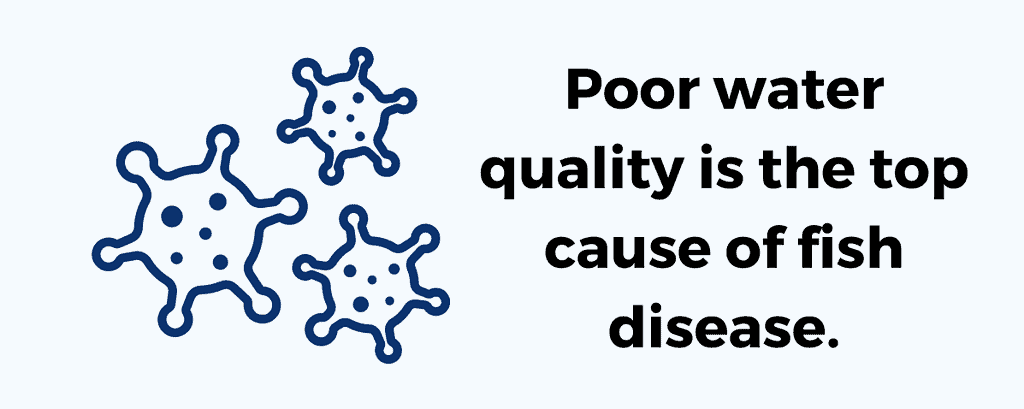
Sudden fluctuations in water conditions are dangerous for your fish.
The most common cause of fish disease is poor water quality. A regular cleaning routine keeps your fish healthy and prevents them from becoming stressed.
Use an algae scraper to clean the sides of the tank. Magnetic algae scrapers are user-friendly and effective for this job.
You must also test the water parameters and temperature of your tank regularly.
Do not trust the thermostat on your aquarium heater. Keep a separate thermometer handy for checking temperatures and ensuring your heater functions properly.
Test your tank for ammonia, nitrite, and pH levels with an aquarium testing kit.
Performing weekly partial water changes lowers ammonia and nitrite levels.
Clean the substrate with the gravel vacuum as you siphon water from the tank.
Never remove more than 20-25% of the tank water at once. Removing too much water crashes your tank’s established nitrogen cycle.
Always add a water conditioner with a dechlorinator to the new water before adding it to the tank. Chlorine causes chemical burns on fish.
The ideal pH for a betta-tetra tank is between 6.5 and 7.
Limestone rocks and coral sand increase pH levels.
Indian almond leaves lower pH levels by releasing tannins. These tannins also create blackwater conditions like the native environment of neon tetras and bettas.
Check out our guide on maintaining ideal water parameters for more information.
Identifying and Addressing Potential Health Issues
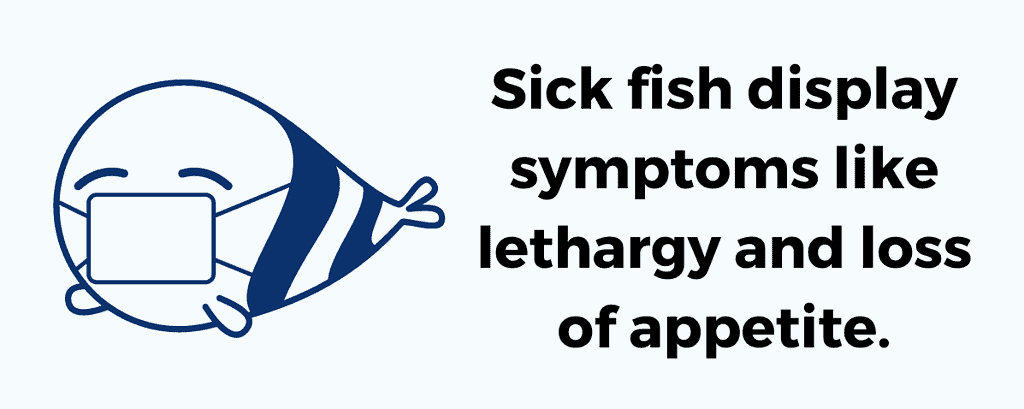
Sick fish usually display several symptoms, such as:
- Lethargy
- Loss of appetite
- Ragged fins
- Skin lesions
- Erratic swimming
- Staying on the bottom of the tank
- White dots/fuzz on the body/fins
If you notice these symptoms in your fish, you must immediately take action.
Quarantine and treat sick fish in a separate hospital tank. This prevents the illness from spreading to healthy tank inhabitants.
A 5-gallon tank works well as a hospital tank. Maintain temperatures with a small tank heater and add some aquarium water from the original tank.
Once you determine the cause of your fish’s illness, follow the proper course of treatment.
We also recommend quarantining new fish for 4-6 weeks before adding them to the community tank. This lowers the risk of spreading disease to the existing community tank.
Understanding Neon Tetra Behavior

Neon tetras have a docile temperament and get along well with other fish.
As a schooling species, neon tetras feel more secure in groups of six or more. The ideal school size for neon tetras is between 8-10 fish.
There are a few instances where neon tetras become aggressive. Signs of aggression in neon tetras include fin nipping and swimming apart from the group.
During Feeding
Neon tetras show aggression if they feel a threat to their food supply.
This usually occurs because there is insufficient space or food for each fish.
Not Enough Space
Overcrowding prevents neon tetras from swimming around in the tank.
When neon tetras can’t swim where they want to, they get frustrated and aggressive.
Mating
Mating increases behavior in neon tetras as they become protective of their eggs.
Sexing neon tetras is challenging, and a mixed group may attempt breeding in a community tank.
We recommend moving breeding neon tetras to a different tank for the safety of your betta.
Poor Water Quality
Poor water quality triggers aggression in neon tetras.
This is another reason tank maintenance and cleaning are important.
Aggressive Tank Mates
Aggressive behavior from other fish causes similar behavior in neon tetras.
These small fish become defensive when they feel threatened.
Stress
Overcrowding and a lack of hiding places cause stress in neon tetras.
Signs of stress in neon tetras are:
- Aggressive behavior
- Loss of appetite
- Frequent hiding
- Erratic swimming
This aggressive behavior may lead to fish separating from the group.
When this happens, the isolated neon tetra usually gets bullied.
Bullying is also common when a new tetra joins the group.
Illness
Like any other animal, neon tetras are aggressive when sick or injured.
A sick or injured neon tetra may swim away from the others.
The healthy neon tetras are more likely to bully the sick or injured members of the group.
Putting a Stop to Aggressive Behavior
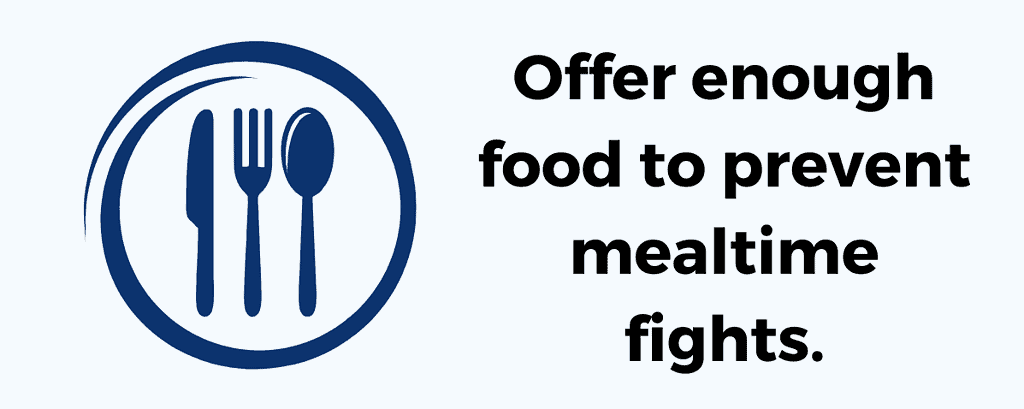
You must identify the source of fighting in your neon tetras for a possible solution.
Ensure you offer your neon tetras enough food. This prevents them from fighting during mealtime.
Provide your neon tetras with plenty of space for swimming. Many plants and hiding spots also provide the fish with a sense of security.
Keep the tank clean and check your water parameters for issues. Correct problems with water parameters right away.
Isolation may be necessary for aggressive neon tetras. If you notice aggression from an individual fish, place it in a separate tank until it calms down.
Watch the behavior of schooling tetras before you buy them from the pet store. If a fish seems more aggressive than the others, it is not a good fit for your community tank.
Introducing Neon Tetras and Betta Fish
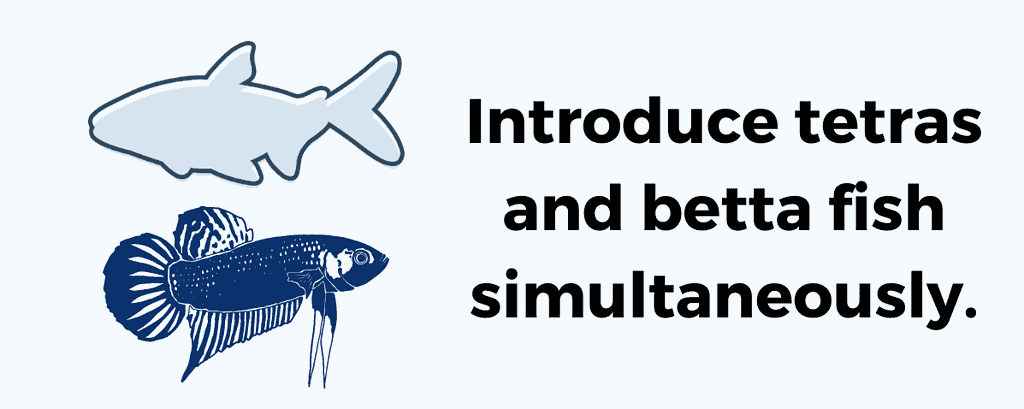
Before introducing your neon tetras and betta fish, ensure all fish are healthy.
This involves keeping the fish in smaller quarantine tanks for 4-6 weeks. During this time, check for signs of illness or aggressive behavior.
The best way of introducing neon tetras and a betta fish is by placing them in the tank simultaneously. This prevents the fish from establishing the entire tank as their territory.
Put each fish species at opposite ends of the tank, with plenty of plants breaking their line of sight.
There may be some aggression in the beginning as the fish get used to each other.
Your betta fish may establish its territory near the surface of the tank. Neon tetras usually prefer swimming in the middle or lower part of the tank.
The bright colors of neon tetras may attract the attention of a betta fish. But neon tetras are fast swimmers, and their small size allows them an easy escape.
If the aggressive behavior continues or becomes severe after several days, separating the fish is necessary.
A tank divider works well for separation if you do not have a separate tank ready.
Continue watching the behavior of your fish over several days.
If removing the tank divider or adding fish back to the tank causes more aggressive behavior, your community tank is not working.
Check your tank setup and water parameters. You may also consider adding more plants or hiding spots.
Neon Tetras and Betta Fish: Making Good Neighbors
Putting neon tetras and a betta fish is challenging. But it is possible with the right setup.
Providing plenty of space, aquatic plants, and hiding spots keep things peaceful between your fish.
A high-quality, balanced diet for your neon tetras and betta fish prevents aggression caused by stress or illness.
Proper tank maintenance and cleaning are also crucial for the safety and well-being of your fish.
Learn more about creating a community tank for your betta with our article on the Best Tank Mates for Betta Fish.


